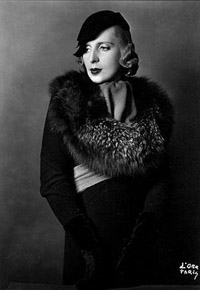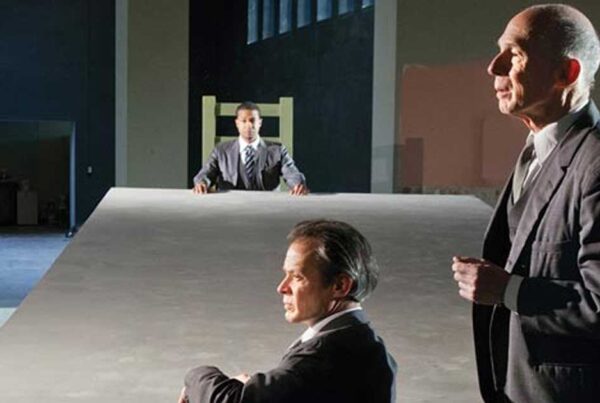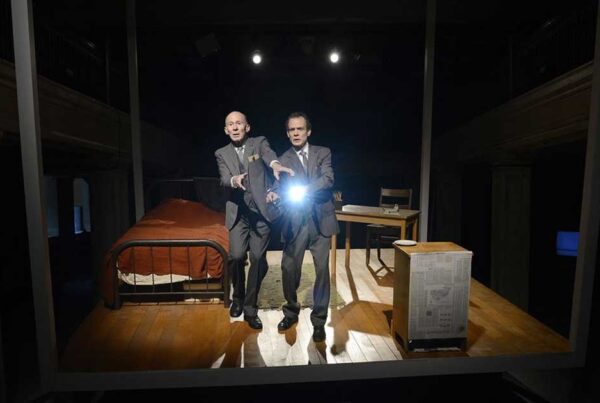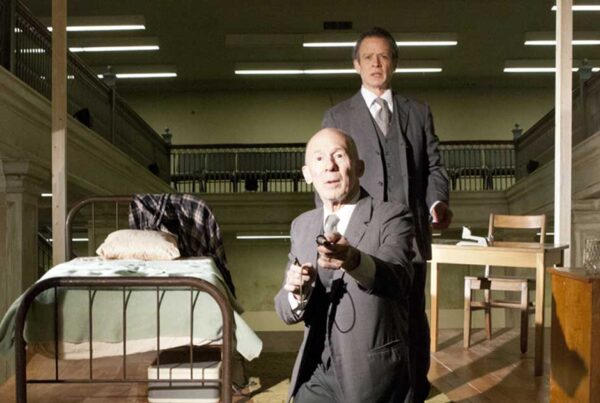 “In Tamara,” says costume designer Pei-Chi Su, “all the characters have their secrets.” What is Finzi hiding in the pocket of his military dress? What does Emilia have on beneath her maid’s uniform? Why does Mario’s chauffeur coat fit so poorly? For Pei-Chi, the costumes are physical extensions of the mystery, layers of khaki and chiffon over the secrets every character is trying to hide.
“In Tamara,” says costume designer Pei-Chi Su, “all the characters have their secrets.” What is Finzi hiding in the pocket of his military dress? What does Emilia have on beneath her maid’s uniform? Why does Mario’s chauffeur coat fit so poorly? For Pei-Chi, the costumes are physical extensions of the mystery, layers of khaki and chiffon over the secrets every character is trying to hide.
“My style is to collect a lot of information first,” Pei-Chi explains. “I like to do a lot of research and study the character, and then I select the information I want to use… [I use] the existing and add the more dramatic.”
Pei-Chi has pages of notes on the play’s ten characters. She has mock-up boards of printed photographs from the time period—Italy, 1927—and plenty of pictures of the characters’ real-life counterparts. She’s sketched designs for 21 outfits, incorporating a lot of beads, silk, and chiffon to give the costumes—especially the women’s dresses—that ‘20s look. Despite the pages of preparation, though, she says, “Design is one thing—but the design isn’t finished until we’re actually in the fitting room.”
Having earned her MFA in costume design from Carnegie Mellon in 2001, Pei-Chi has worked with Quantum Theatre on past productions, but TAMARA is the first immersive-theatre project she’s done. “It almost feels like doing a movie. Onstage, we can hide stuff. But [with TAMARA] we have to think about the close-up. The detail has to be there.”
 Pei-Chi’s character-driven designs endeavor to keep those details both subtle and realistic. The servants’ clothes, she explains, “should look like they’ve been worn for several days, and they should look very comfortable in [their uniforms] because they probably only have two or three sets of clothes.”
Pei-Chi’s character-driven designs endeavor to keep those details both subtle and realistic. The servants’ clothes, she explains, “should look like they’ve been worn for several days, and they should look very comfortable in [their uniforms] because they probably only have two or three sets of clothes.”
The wealthier characters, though, have what Pei-Chi calls Gatsby style. “Especially in the 1920s, you dressed for your status.” Gabriele d’Annunzio, for example, has a specific outfit for everything he does, each one outlandish and Gatsby-fancy. “He was a collector—these days, we might say he was a ‘hoarder.’ The same thing for clothes.” Pei-Chi has photographs of d’Annunzio’s wardrobe, which included a monk’s robe, several kimonos, even more pseudo-military uniforms, and a pair of leather shoes with a rather cartoonish phallus painted on each where a normal person might expect laces.
“D’Annunzio does the most changing,” says Pei-Chi. “He wears a white military uniform to greet guests. When he prays, he wears the monk’s robe. He might wear something else when he writes. He has his rituals.”
The realism of the costumes doesn’t stop at the design, either. The characters’ bedrooms are the actors’ dressing rooms. Tamara’s dresses will be hanging in the wardrobe of her guest room, while d’Annunzio’s eccentric uniforms hang in his own lavish bedroom. This is part Stanislavski, part logistics—the costumes can’t be labeled with a tag the audience might see. “ The costumes are being made to look real. Everything should be subtle,” Pei-Chi says. “Except for d’Annunzio—his clothes are never subtle.”
The costumes are being made to look real. Everything should be subtle,” Pei-Chi says. “Except for d’Annunzio—his clothes are never subtle.”
See Pei-Chi Su’s costume designs in detail in Quantum Theatre’s production of TAMARA, directed by John Shepard, August 5 through September 14. Purchase TICKETS online or call 412-362-1713.




